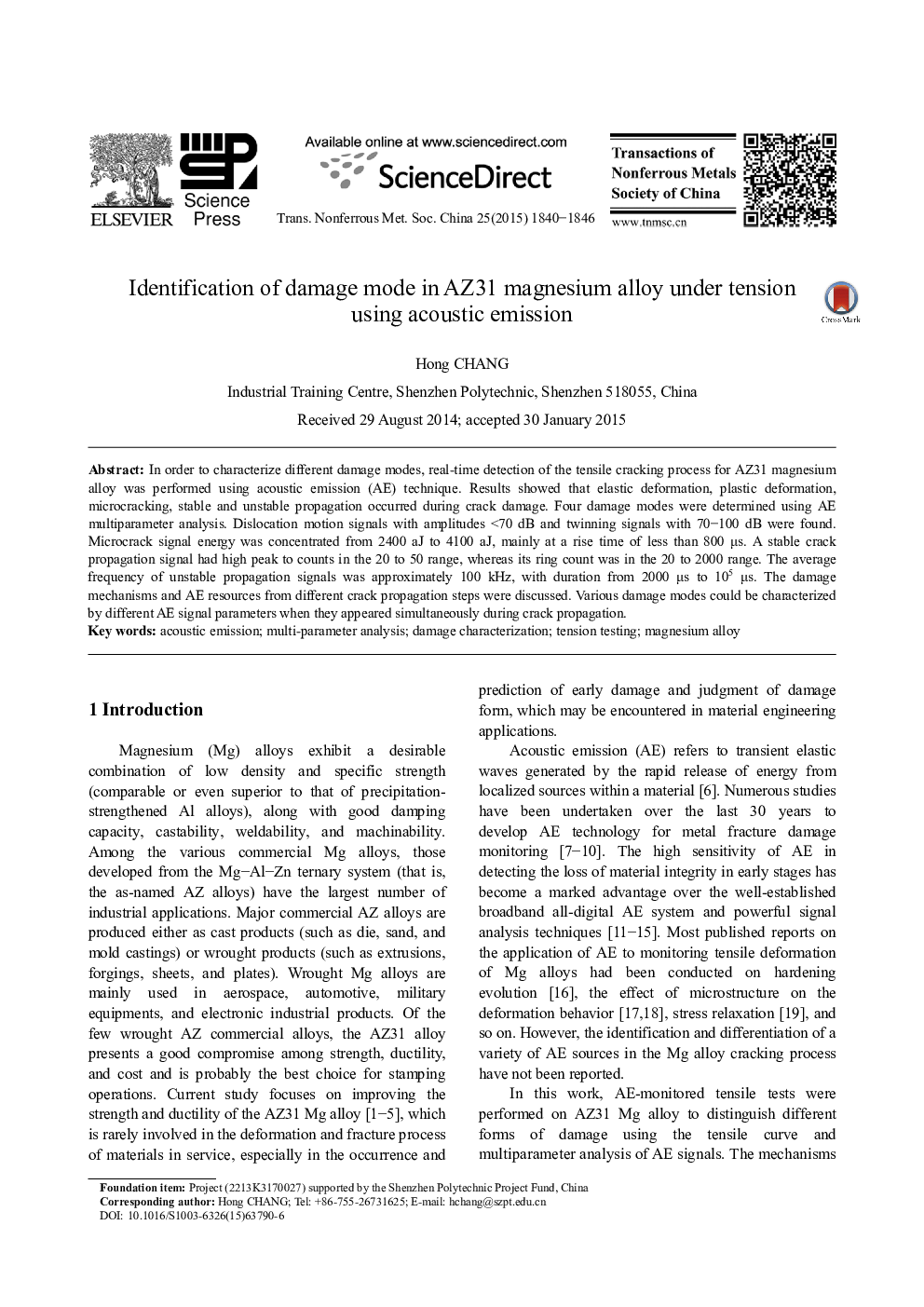| Article ID | Journal | Published Year | Pages | File Type |
|---|---|---|---|---|
| 1636390 | Transactions of Nonferrous Metals Society of China | 2015 | 7 Pages |
Abstract
In order to characterize different damage modes, real-time detection of the tensile cracking process for AZ31 magnesium alloy was performed using acoustic emission (AE) technique. Results showed that elastic deformation, plastic deformation, microcracking, stable and unstable propagation occurred during crack damage. Four damage modes were determined using AE multiparameter analysis. Dislocation motion signals with amplitudes <70 dB and twinning signals with 70-100 dB were found. Microcrack signal energy was concentrated from 2400 aJ to 4100 aJ, mainly at a rise time of less than 800 μs. A stable crack propagation signal had high peak to counts in the 20 to 50 range, whereas its ring count was in the 20 to 2000 range. The average frequency of unstable propagation signals was approximately 100 kHz, with duration from 2000 μs to 105 μs. The damage mechanisms and AE resources from different crack propagation steps were discussed. Various damage modes could be characterized by different AE signal parameters when they appeared simultaneously during crack propagation.
Keywords
Related Topics
Physical Sciences and Engineering
Materials Science
Metals and Alloys
Authors
Hong CHANG,
